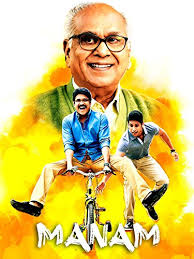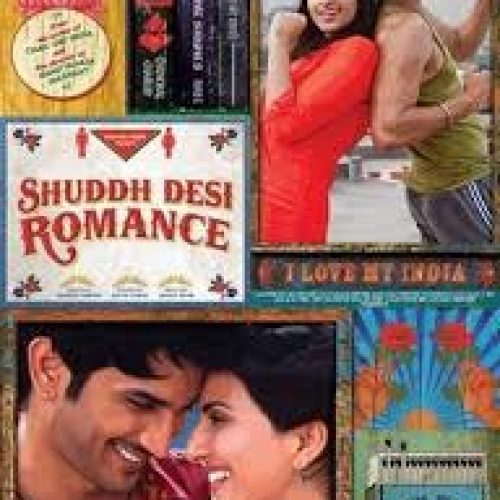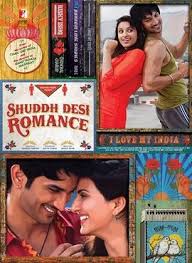Life, death, and reincarnation blend seamlessly in a film that tugs at your heartstrings while challenging your perspective on destiny. Manam, a 2014 Telugu-language drama, is a cinematic experience that transcends time and generations. Directed by Vikram Kumar, this film boasts an impressive cast featuring Akkineni Nagarjuna, Naga Chaitanya, Samantha Ruth Prabhu, and the legendary late Akkineni Nageswara Rao. The movie spans multiple decades, primarily set in the 1920s, 1980s, and 2013, weaving a tale of love, loss, and karmic connections. Blending fantasy, romance, and drama, Manam explores reincarnation in a way that is emotionally compelling and richly layered.
The story opens with Radha (Naga Chaitanya) and Krishna (Samantha), a couple in the 1980s whose tragic love story sets the stage for a cycle of reincarnation. As fate would have it, they are reborn as Bittu (Nagarjuna) and Nageswara Rao (Nageswara Rao), linked once again by love, loss, and a strange twist of fate. Bittu, a wealthy businessman, encounters people who seem strangely familiar, leading him to investigate a past life he never knew existed. The plot thickens as the characters slowly realize that their lives are intricately connected across different time periods. What follows is a heartwarming yet gripping exploration of how love transcends lifetimes, with humor and heartfelt moments sprinkled in. While the film touches on serious themes, its lighthearted moments ensure it never feels heavy.
One of the standout aspects of the film is its acting, especially given the generational talent of the Akkineni family. Nagarjuna delivers a mature and nuanced performance as Bittu, effortlessly transitioning between his roles in the past and present timelines. His chemistry with both Nageswara Rao and Naga Chaitanya brings warmth to the familial dynamics that the film is built upon. Naga Chaitanya, often playing the young, romantic lead, embodies Radha with a youthful, carefree energy, while Samantha as Krishna brings charm and grace to her role. Her performance stands out in emotional scenes, particularly those where the character grapples with the realities of reincarnation and love lost. Nageswara Rao, in one of his final performances, lends a gravitas that elevates the film. Watching the real-life father-son-grandson trio share the screen is emotionally poignant and gives the film a deeper significance, especially for fans of Telugu cinema.
The film’s direction by Vikram Kumar deserves special mention. Handling a complex narrative structure like this is no easy feat, but Vikram navigates through the different timelines with remarkable clarity. His direction ensures that despite the shifts in time, the film remains cohesive and easy to follow. The editing by Prawin Pudi plays a significant role in maintaining this narrative flow. The transitions between the past and present are smooth, never disorienting the viewer. The reincarnation theme could easily feel convoluted, but thanks to sharp editing and tight pacing, the film keeps the audience engaged.
Cinematography by P.S. Vinod beautifully captures the contrast between different time periods. The 1920s scenes are bathed in a warm, nostalgic glow, evoking a sense of timeless romance, while the present-day sequences are crisp and modern. The film’s visual storytelling enhances the emotional weight of the story, making each scene, whether dramatic or lighthearted, visually appealing. The use of light and shadow is particularly effective in heightening the emotional beats of the film. There’s a dreamlike quality to the scenes that deal with reincarnation, giving a subtle nod to the film’s overarching themes of fate and destiny.
Music plays a pivotal role in shaping the emotional tone of Manam. The soundtrack, composed by Anup Rubens, is a melodious blend of soulful ballads and lively tracks that suit the film’s varying moods. Songs like “Kanulanu Thaake” and “Chinni Chinni Aasa” not only complement the romantic arcs but also enhance the narrative’s emotional depth. The background score underscores key moments without being intrusive, allowing the emotional gravity of the scenes to take center stage. While some songs feel more like montages, they serve their purpose in moving the plot forward and giving the audience moments to breathe between heavier emotional scenes.
Costume design and production value are other areas where the film excels. The period-specific costumes help transport the audience to different eras, adding authenticity to the settings. The shift in wardrobe across timelines is subtle yet impactful, particularly when depicting the contrast between the traditional 1920s and the contemporary fashion of modern-day characters. Similarly, the production design reflects the aesthetic of each era convincingly. Whether it’s the old-world charm of a 1920s mansion or the sleek, modern interiors of a 2013 corporate setting, the attention to detail enhances the film’s believability.
The theme of reincarnation is a bold choice, and the film uses it not just as a plot device but as a way to explore deeper emotional and philosophical questions. It delves into whether love is truly eternal and whether the bonds we form in one lifetime can carry over into another. By embedding these ideas into the storyline, Manam elevates itself from being a simple romantic drama to something more profound. It leaves the viewer with the sense that fate is not just a series of random events but a carefully orchestrated plan, with love at its core.
In conclusion, Manam is a film that hits all the right emotional notes. The performances, particularly from the Akkineni trio, anchor the film with a sense of authenticity and emotional depth. The direction, cinematography, and music all come together to create a film that is visually stunning and emotionally resonant. The narrative structure, though complex, is handled with care, making sure the audience is never lost. For those who enjoy films that blend romance, drama, and a touch of fantasy, Manam is a must-watch. Its exploration of reincarnation offers a refreshing take on love stories, making it stand out in the genre. It’s a film that lingers with you long after the credits roll, a testament to its emotional power and storytelling prowess.







